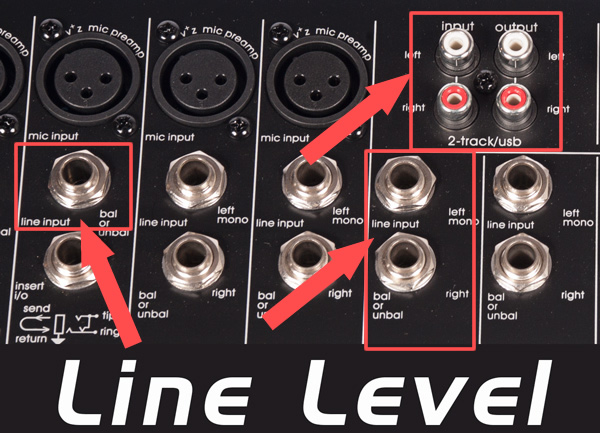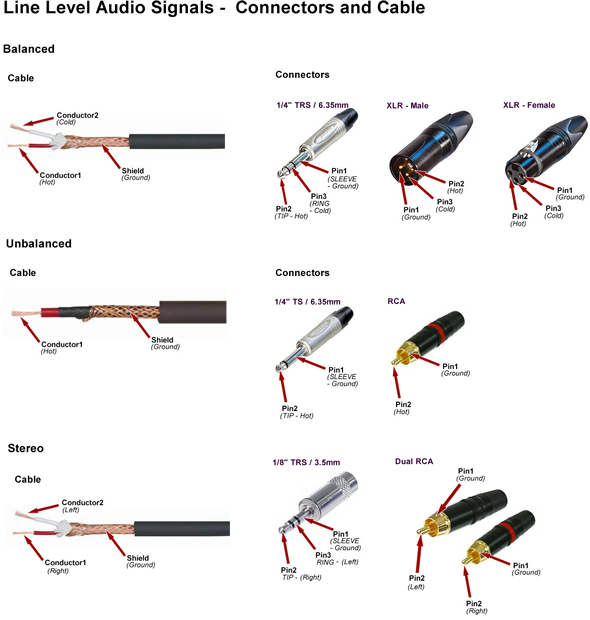Understanding Line Level Audio Signal Types
One of the most essential concepts in audio systems is the line level signal. It serves as the standard signal strength for transferring analog audio between devices. Line inputs and outputs are found on consumer devices such as TV's, DVD players and laptops, as well as pro audio gear like mixing desks, audio interfaces, and signal processors. These inputs and outputs ensure compatibility across equipment with line-level capabilities.

Line Level Impedance Characteristics
Line outputs have signal impedance typically ranging from 100ohm to 600ohm, while a line input has an impedance of 10,000ohm (10k ohm). The difference in impedance between the IN and OUT is what is used to drive the signal.
Hi-Z Signals Compared to Line Level
The way the line level signal works is similar to a Hi-Z signal, where a 10k ohm output from an electric guitar drives a 1M ohm (1,000,000 ohm) input on the guitar amp or effect pedal. Connecting to a 10k line input instead of a 1M Hi-Z input 'loads down' the signal, reducing sound quality.
Signal Strength Spectrum in Analog Audio
Line level sits in the middle of the analog audio signal strength spectrum. Microphones and guitar pickups output weaker signals, while headphones and speakers output stronger signals.
Consumer vs Professional Line Level Standards
There are two standards for line level: 'consumer' at -10 dBV and 'professional' at +4 dBu. Higher-end studio gear often uses the pro standard. Some mixers and power amps allow switching between the two. It's best to match signal levels between devices when possible.
Line Level Connectors and Cables
A line level signal can be carried through a guitar lead or microphone cable. There are generally no cables sold as 'line level' cables. Often patch or link cables are needed with different connectors. The 4 main connector types in analog audio are 1/4" jack, 1/8" jack, RCA, and XLR.
Balanced vs Unbalanced Outputs
A line level signal can be balanced or unbalanced. Unbalanced connections include 1/8" and RCA plugs. Balanced outputs such as TRS and XLR are common on pro gear. XLR inputs are usually mic level, but XLR outputs are typically line level and balanced—ready for powered speakers, amplifiers, or processors.
Balanced vs Unbalanced Line Level Signals
Balanced signals use three conductors (positive, negative, ground) to cancel noise and are best for long cable runs. Unbalanced signals use only two conductors and are more prone to interference, making them less effective over distance.
Line Level vs Mic Level
Mic level signals are much weaker than line level and must be preamplified before use. Connecting a mic to a line input results in very low output. Feeding a line level into a mic input can cause distortion. Always match input and output levels properly.
Impedance Matching in Audio Systems
Impedance matching helps maintain signal integrity and reduces distortion. Line outputs expect high impedance loads. Mismatched impedance can lead to signal loss or frequency changes. Check impedance specs when pairing gear.
Choosing the Right Cables for Line Level Signals
Selecting the right cable is key to maintaining signal quality. Balanced TRS and XLR cables are preferred for noise rejection. Unbalanced RCA and TS cables are fine for short runs. Always use well-shielded cables to avoid interference.














